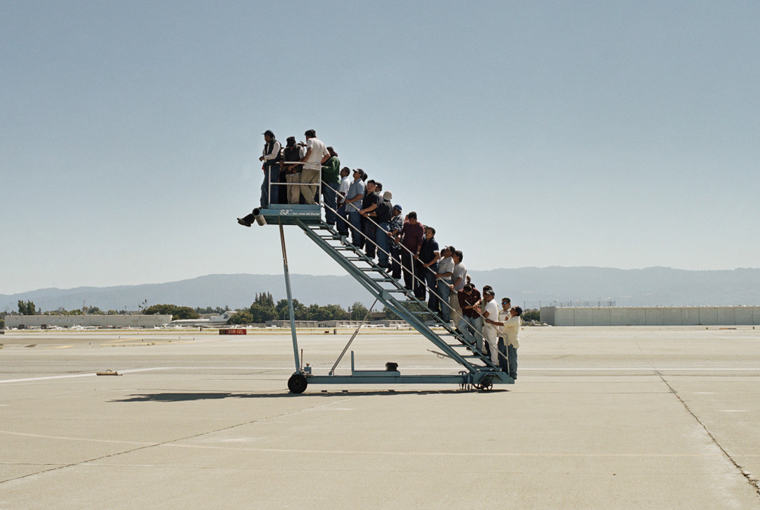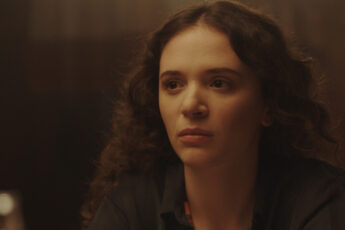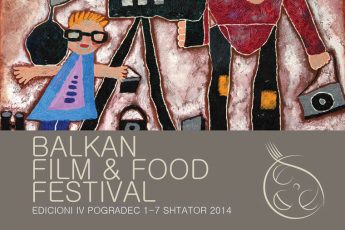Video Passages: Witnessing States of In-Betweenness
Spotlight on Adrian Paci at the Thessaloniki International Documentary Festival 2023
Vol. 136 (Summer 2023) by Ana Grgić
The 25th edition of the Thessaloniki Documentary Festival featured a selection of video work by Albanian artist Adrian Paci, born in Shkoder in 1969, who resides in Milan. He represented Albania at the Venice Biennale in 1999 and has taken part in numerous group exhibition (MoMA PS1, New York, in 2005; Manifesta 3, Ljubljana, in 2000; Tate Modern, London, in 2008; MAXXI – National Museum of XXI Century Arts, Rome; and the Lyon and Havana biennials, in 2011), and has had his work featured in multiple solo exhibitions (Moderna Museet, Stockholm; Kunstverein, Hannover; Center for Contemporary Art, Tel Aviv; Bloomberg Space, London; and Kunsthaus, Zurich).
Paci grew up in Communist-era Albania and trained as a painter, finally emigrating to Italy in 1997, the same year in which he started to use video technology to create artworks. His first work done on video was Albanian Stories, in which he filmed his daughter Jolanda telling fairy tales, which reflected on the family’s experience as Albanian migrants in Italy. This work brought Adrian Paci visibility on the contemporary art scene and provoked international recognition, as it was shown at the Venice Biennale two years later.
As an artistic medium, video allowed Paci to film what was happening around him, making his position as an artist closer to that of a witness. A selection of nine short works were screened at the Pavlos Zannas cinema theater in a single session at the Thessaloniki Film Festival this year: Believe I am an Artist (2000, Italy), Centro di permanenza temporanea (2007, Switzerland), The Column (2013, Italy), Interregnum (2017, Italy), Per Speculum (2006, Italy, 2006), Piktori (2002, Albania), Prova (2019, Albania), Turn On (2004, Albania) and Vajtojca (2002, Albania).
Paci doesn’t consider himself a filmmaker, but rather an artist. Though he is often invited to film festivals, he normally shows his moving image work in museums, galleries and in the context of exhibitions. The choice to include a spotlight in this year’s documentary film festival in Thessaloniki points to the desire of the festival’s artistic management to diversify and expand the scope of how we envision “documentaries” but also “cinema” generally speaking. Paci’s works invite us to reflect on the act of witnessing events via the moving image. They also experiment with movement between and through space and time, something that continues to be a formal concern of cinema as an audiovisual medium. This is most evident in Interregnum.
Interregnum juxtaposes state-sanctioned archival and found footage from Albania, Yugoslavia, China, North Korea and the Soviet Union from the 1920s to the 1980s, which documents acts of national mourning for the deaths of Communist leaders, marking epochal and ideological shifts. Amidst discussions on the politics of memory and the reevaluation of national narratives, Interregnum compresses original sound from archival footage into a sonic hum, creating a continuous thread across disparate images. This approach hints at a traumatized collective body and a transmemorial project, linking the past to our unstable present.
In his other pieces, namely Vajtojca and Prova, there is a notable and dynamic interplay between visual elements and sound. This interaction frequently generates dissonance or tension, challenging the harmony between what is seen and what is heard. In the case of Prova, the piece emphasizes the process of transforming sounds into speech by repeating the word “prova”, which translates to rehearsal, evidence. Returning to Interregnum, Paci notes in our interview with him that this project had been in his mind for over twelve years. Yet he felt it was only the right moment in 2017 to bring it to life, given the social and political context around the world, notably the rise of right-wing populism and the decline of “Western” democracy. Indeed, “Interregnum” refers to the concept introduced by Antonio Gramsci in his Prison Notebooks, which were written between 1929 and 1935 during his imprisonment by the Italian Fascist regime, and which are considered a major contribution to twentieth century political theory.
In his notebooks, Gramsci reflected on the crisis following the Great Depression and described the interwar period as a moment of social and political crisis with the internationalist working class unable to lead. This would lead to “morbid symptoms”, the rise of far-right populist nationalism and Fascism on the one side, and ultra-left Communism based on Stalinism on the other: “The crisis consists precisely in the fact that the old is dying and the new cannot be born; in this interregnum a great variety of morbid symptoms appear”.1 We could therefore see, in Interregnum, the desire to reckon with the past – with that of the artist and with his country’s traumatic and difficult past under the Hoxha regime – in an effort not to suppress the memory or break with its Communist past, but point to the continuity of historical time, which seeps into the present and continues to haunt the never-ending post-Communist transition. In this sense, Interregnum shrewdly foregrounds that the collapse of the socialist bloc countries and consequently socialism as a political model does not represent the end of history, but should rather be seen as a larger continuous process that does not constitute a break with the past. Or better, Marx’s specter of Communism still continues to haunt Europe as well as other places around the world.
The artist’s concern with identity, positionality, and their tensions – the state of feeling and being in an in-between state – are explored in several other works, notably Believe me I am an Artist, Centro di Permanenza Temporanea, Prova, and The Column. Believe me I am an Artist is presented as black-and-white CCTV footage of the artist’s interaction at a police station, where he is summoned to explain the act of taking photos of his daughter. By putting the artist within a different context, Paci strips the artist of their privileged role, as the artist (in this case Adrian Paci himself) struggles to explain or rather prove their identity to the policeman.
In essence, Paci’s works shift and deterritorialize people and things, in order to open up further reflections on the state of being in the world. Though Paci does not describe his own work as “political”, much of his works deal with social and political issues. If only indirectly, they engage with the legacy of colonial power structures, which are articulated in social, economic, political, and cultural inequalities around the globe. For instance, Centro di Permanenza Temporanea invites us to reflect on the precarious and transitory state of the figure of the “migrant” and human displacement around the world. The short video shows a crowded group of South American migrants slowly ascending the airplane stairs on the airport tarmac, revealing their faces and gestures, which show fear, anxiety, anticipation, and exhaustion. Finally, the camera slowly retreats and reveals that there is no plane, and the group is waiting, in vain, on the stairs, recalling this experience of inhabiting temporary spaces.
Migrants, refugees, and asylum seekers tend to inhabit “non-places”, such as airports, bus and train stations, police stations, border zones, refugee camps, and detention centers. Furthermore, the Italian name for temporary accommodation, or asylum seeker centers, is “centro di permanenza temporanea”, which sounds like an oxymoron. The term “temporary permanence” endows Paci’s work with an added layer of irony and complexity surrounding the real and imaginary spaces, to which displaced people are confined to for shorter or longer periods of time, resembling a sort of contemporary (real-life) purgatory. Paci notes how immigration is not a topic in his view, but rather the experience of life, a moment of transition, both in terms of an individual’s identity, but also in terms of the spatial context (moving from one place to another). In a way, the majority of the works shown at Thessaloniki deal with the spaces of transit and passage, and the state of instability and tensions which emerge from these spaces.
Perhaps the most complex and aesthetically and conceptually accomplished work in the selection was Paci’s 2013 work The Column commissioned by the Jeu de Paume gallery in Paris. The Column is a slow and poetic meditation on modern-day capitalism, economic inequalities, labor exploitation, and Western art aesthetics, which ultimately engages with postcolonial power structures in both political and imaginary realms. Moreover, The Column could be read as a comment on Western consumerism and market trade policies, because it unveils the hidden side of cheap labor and arduous working conditions. Notably, it shows the process of production in the service of Western consumers/viewers. This work unravels slowly, and shows the process of sculpting a marble column, from extracting the marble stone in a Beijing mine in China, to transporting it onto a ship, where the skilled stonemasons proceed to carve and shape the block of marble into a perfectly sculpted Corinthian column, while the ship traverses the ocean on the way to Europe to the exhibition at Jeu de Paume in Paris.
Paci notes how the idea for this work came from a story of a sculpture that could be produced on a voyage from China to Europe on board a ship. The idea that the sculpture could be completed during the voyage across the sea, situates the process of its production in a non-place and non-time. This decontextualizes the creative process of making European classical art through situating the production of the marble column on a ship in the middle of the ocean, instead of an artist studio or workshop. Furthermore, the process of sculpting a column during its transportation from China to Europe, is a comment on capitalist obsession with productivity and the notion of saving time (i.e. the famous saying that “time is money”). Furthermore, Paci’s interest in the movement and gestures of the stonemason’s bodies and hands is palpable, as the video tries to capture the memory of this skill and craftsmanship, which seems to be passed on from generation to generation. It also allows us to reflect on the movement of ideas, people, and things from East to West and vice versa as an ongoing historical process. Finally, the passing of time and the transitory state of existence are poignantly captured in wide shots which reveal the sunrays breaking through the ceiling openings, which in turn form natural abstractions and shapes on the finished column and the floors covered in white marble dust.
References
- 1.Antonio Gramsci. Selections from the Prison Notebooks. New York: International Publishers, 1971; 276.




Leave a Comment